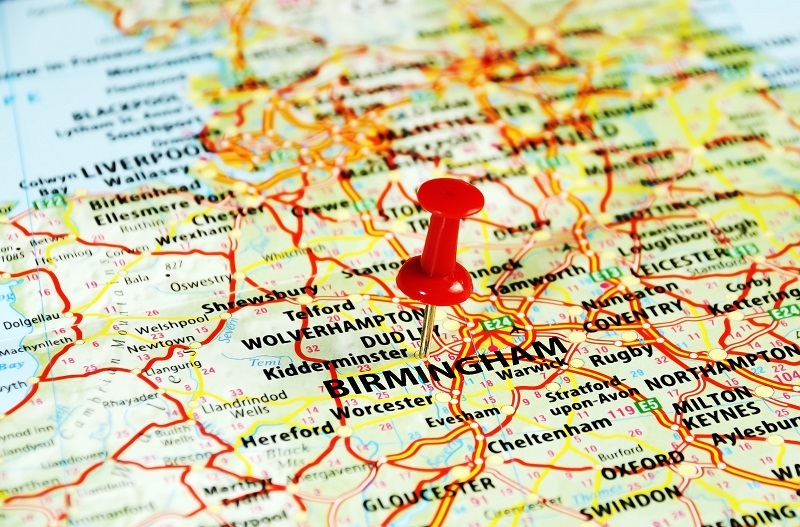Hydrangea Happiness: Expert Tips and Tricks
Posted on 03/07/2025
Hydrangea Happiness: Expert Tips and Tricks
Few plants can bring as much joy and vibrant color to a garden as hydrangeas. Whether your goal is dazzling blooms for a cottage garden, an elegant border, or even spectacular cut flowers, mastering the art of growing hydrangeas can elevate your gardening experience. In this comprehensive guide, we'll share expert tips and essential tricks for achieving true hydrangea happiness in any yard.
Understanding Hydrangeas: The Basics
Hydrangeas are prized for their lush foliage and abundant, globe-like flower heads. With several species and countless cultivars, these remarkable shrubs suit just about any garden style. From classic Hydrangea macrophylla (bigleaf hydrangea) to panicle and smooth types, their blooms range from deep blues to pastel pinks and pristine whites. Selecting the right variety is the first step on your path to hydrangea happiness.
Popular Types of Hydrangeas
- Bigleaf Hydrangea (Hydrangea macrophylla):
- Renowned for their color-changing blossoms based on soil pH.
- Panicle Hydrangea (Hydrangea paniculata):
- Upright, conical flower clusters, often white turning pink.
- Oakleaf Hydrangea (Hydrangea quercifolia):
- Unique lobed leaves and excellent fall color.
- Smooth Hydrangea (Hydrangea arborescens):
- Reliable, easy to grow, with oversized blooms like 'Annabelle'.
Tip: Research the specific type that best fits your climate and garden plans!

Planting Hydrangeas for Maximum Happiness
Successful hydrangea care begins with proper planting. Location matters: hydrangeas prefer spots with morning sun and afternoon shade, especially in warmer zones. This balance fosters strong stems and prevents wilting.
Soil Preparation
- Drainage: Hydrangeas dislike soggy roots. Opt for soil that drains well but retains enough moisture for healthy growth.
- Soil pH: For hydrangea macrophylla, pH impacts color.
- Acidic soils (pH below 6): Blue flowers
- Neutral/alkaline soils (pH above 7): Pink or purple flowers
- Compost: Mix in organic compost or leaf mold at planting for a nutrient boost.
Plant hydrangeas at the same depth as they were in the nursery pot. Water them thoroughly and mulch around the base to retain moisture.
Quick Planting Checklist
- Space plants 3-10 feet apart depending on mature size.
- Water deeply after planting and throughout the first season.
- Mulch to suppress weeds and retain soil moisture.
Essential Hydrangea Care Tips
Caring for hydrangeas is relatively straightforward, but understanding their preferences leads to truly thriving plants. Here are some expert tips for hydrangea success:
Watering Hydrangeas
Hydrangeas derive their name from the Greek words for "water" and "vessel"--a clear sign they love consistent moisture. However, avoid overwatering!
- Water deeply 1-2 times per week, more during hot, dry spells.
- Early morning watering is best--prevents dehydration and discourages disease.
- Mulch helps conserve water and keep roots cool.
Fertilizer for Hydrangea Happiness
Feeding hydrangeas at the right time boosts flower production and overall vigor.
- Use a balanced, slow-release fertilizer in spring as new growth appears.
- Over-fertilization encourages leafy growth with fewer flowers--less is sometimes more!
- Acid-loving plant fertilizers can help maintain or encourage blue flower tones in certain hydrangeas.
Pruning Hydrangeas: When and How
Pruning is essential for flower quality and plant health--but timing and methods vary by hydrangea type. Here's a handy guide:
- Bigleaf & Oakleaf Hydrangeas:
- Blooms on old wood (last season's stems).
- Prune right after flowering--never in spring, or you'll remove next year's buds.
- Panicle & Smooth Hydrangeas:
- Blooms on new wood (current season's growth).
- Prune back in late winter or early spring to encourage larger, fresher flowers.
Tip: Always remove dead, damaged, or crossing branches for a neat, healthy plant.
Solving Common Hydrangea Problems
Even with the best hydrangea care practices, issues can arise. Here's how to keep your blooms healthy and lush:
Wilting and Leaf Burn
- Hydrangeas wilt if underwatered or if temperatures soar.
- Water deeply and increase shade if needed--leaf scorch is often a sign of too much midday sun.
Poor or No Flowering
- Possible causes: Pruning at the wrong time, late spring frosts, or excess nitrogen (too much fertilizer).
- Check your pruning schedule and use fertilizer with caution.
Yellowing Leaves
- Caused by poor drainage, overwatering, or nutrient deficiency.
- Amend soil, water properly, and consider a dose of chelated iron.
Insect and Disease Alerts
- Common issues: aphids, spider mites, powdery mildew, and leaf spot.
- Keep foliage dry, increase air circulation, and use organic controls (like neem oil) if needed.
Expert Tricks for Gorgeous Hydrangea Blooms
Color Magic: Changing Hydrangea Flower Colors
One of the wonders of hydrangea happiness is the ability to tweak flower color (especially in bigleaf types) by adjusting soil pH.
- Bluer Blooms: Lower soil pH (more acidic) by adding sulfur, sphagnum peat, or aluminum sulfate.
- Pinker Blooms: Raise soil pH (more alkaline) with garden lime or wood ash.
- Test soil pH each season for best results; changes may take a year or more.
Prolonging Bloom Time
- Deadhead spent flowers to encourage more blooms and tidy plants.
- Keep soil consistently moist during flowering periods.
- Fertilize lightly after the first bloom flush to coax additional blossoms.
Growing Hydrangeas in Containers
- Select a large container with excellent drainage.
- Use high-quality potting mix and feed regularly.
- Water containers more often, as they dry quickly in hot weather.
- Overwinter container hydrangeas by moving to a sheltered spot or insulating the pot in cold regions.
Hydrangea Use: In the Garden and Beyond
Hydrangeas are versatile, with beauty that extends inside and out. Here's how to maximize their impact in your landscape--and beyond!
Landscaping with Hydrangeas
- Use as foundation shrubs for all-season structure.
- Create dramatic hedges or privacy screens with hydrangeas.
- Try a hydrangea border for classic cottage charm.
- Mix with other shade lovers like hostas and ferns for texture and interest.
Hydrangeas as Cut Flowers and Dried Arrangements
- Cut blossoms in the morning after dew dries for longest vase life.
- To dry, wait until blooms feel papery--the petals will hold their shape and color for months.
- Display fresh or dried hydrangeas in bouquets and wreaths for indoor joy!
Year-Round Hydrangea Happiness
Don't forget hydrangeas provide interest even after their peak bloom.
- Autumn: Many types develop dazzling fall foliage in shades of bronze, red, and purple.
- Winter: Leave spent flower heads for frosty architectural beauty.
Monthly Hydrangea Care Calendar
- Winter: Prune panicle and smooth hydrangeas; protect roots with mulch where cold.
- Spring: Fertilize, water, and check for pests as new growth appears.
- Summer: Water regularly, deadhead spent blooms, enjoy vibrant flowers.
- Fall: Enjoy leaf color, tidy plants, apply mulch for winter protection.

Frequently Asked Questions About Hydrangea Happiness
Why are my hydrangea leaves turning brown?
This often results from drought stress or leaf scorch due to excessive sun. Water deeply, improve shade, and mulch to maintain even soil moisture.
Can I grow hydrangeas indoors?
While potted hydrangeas can bloom indoors temporarily, they thrive best outdoors for long-term growth. Provide bright light, avoid heat sources, and move outdoors when possible.
How do I revive a wilting hydrangea?
Start by deeply watering and moving the plant out of direct midday sun. Trim away any dead stems or foliage. Consistent moisture is key.
Are hydrangeas deer-resistant?
Most hydrangeas are not deer-proof, though some types are less palatable than others. If deer are a concern, consider protective fencing or try planting near less appetizing species.
Should I deadhead hydrangeas?
Deadheading (removing old flower heads) encourages more blooms and tidier plants, but isn't strictly necessary. For bigleaf and oakleaf hydrangeas, deadhead carefully to avoid injuring next year's flower buds.
Conclusion: Experience Lasting Hydrangea Happiness
Hydrangea happiness is truly within reach! By following these expert tips--selecting the right variety, planting with care, and tending to their needs with dedication--you'll enjoy billows of breathtaking blooms year after year. Whether you're an experienced gardener or just starting out, hydrangeas reward your attention with stunning displays and endless inspiration.
- Choose a hydrangea to fit your location and style
- Prepare soil and site for strong, healthy plants
- Prune, water, and fertilize with care
- Enjoy the ever-changing colors and forms--indoors or out!
From classic blue mopheads to snowy white panicles, let hydrangea happiness fill your garden--and your home--with lasting beauty. May your blooms be bold, your leaves lush, and your gardening moments joyful all season long!
Latest Posts
What Flower Captures the Essence of Your Personality
The Language of Birth Flowers: What Does Your Birth Month Reveal about You
Hydrangea Happiness: Expert Tips and Tricks





